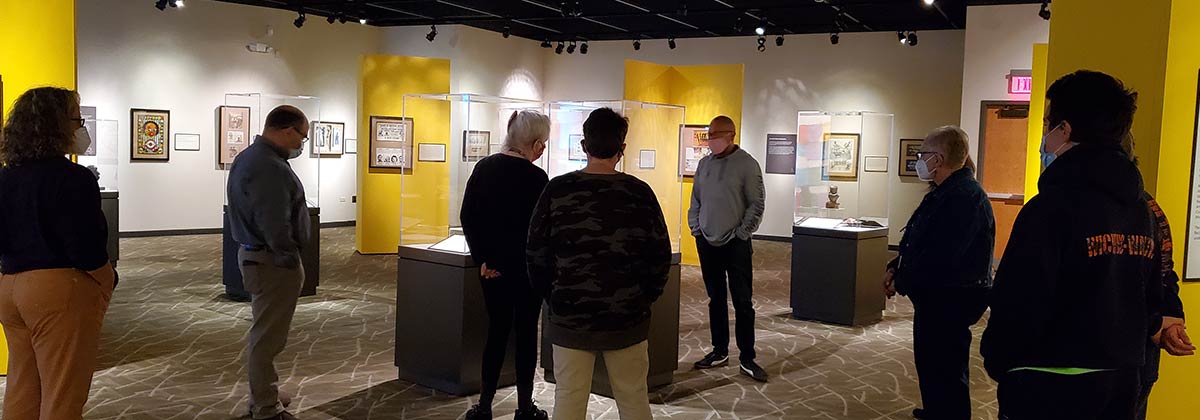- James B. and Rosalyn L. Pick Museum of Anthropology
- Faculty and Students
- Lesson Plans Exploring Jim Crow Racist Memorabilia
Lesson Plans Exploring Jim Crow Racist Memorabilia

It can be hard to teach students about the history of racism in the United States. Lessons tend to focus on milestone laws, court decisions or events, such as Brown vs. Board of Education or Juneteenth. However, racism was just as much a part of daily life. It can be seen in everyday objects, such as children's books, games and household products, that depict African Americans in negative ways. These harmful stereotypes and caricatures not only reflected racism, but also perpetuated it.
NIU students designed a set of lesson plans focused on such objects, which were displayed at the Hateful Things exhibit on campus, on loan from the Jim Crow Museum of Racist Memorabilia. Designed for middle- and secondary-level learners, the lesson plans can be used individually or as a unit. They were created under the supervision of Donna Werderich, Ed.D.; Elizabeth Kahn, Ph.D.; Vickie McGrane; and Joseph Flynn, Ph.D.
Using the Lesson Plans
By exploring how negative representations of African Americans have been part of daily life in America, you can help students understand how people lived, survived and thrived through racism. Here are some tips to help you along the way.
Prepare
Make sure you have a solid grasp of the information before engaging in the lessons:
- Take a virtual tour of the Hateful Things exhibit.
- Explore the Jim Crow Museum of Racist Memorabilia. It can be useful for students, as well.
Set a Sensitive Tone
- Emphasize that the objects are not funny. Explain how the images were designed to dehumanize African Americans and that inappropriate laughter could be damaging to other students.
- Acknowledge that the images may cause them to feel discomfort and explain the benefit of understanding how racism works.
- If a student has a question and you don't know the answer, tell them so, and challenge them (and yourself) to find it. It's good practice to show you're learning, too.
Relate to Larger Context
- Help students understand that African Americans and allies have always resisted these stereotypes and caricatures and that the civil rights movement led to some improvements.
- Tell students how stereotyping has also been experienced by Indigenous, Asian and Latin Americans, and more recently, by Muslim, Persian and Middle Eastern Americans.
- Explain how the fight for positive, accurate and diverse representation continues today (as in the #OscarsSoWhite campaign, for example).
Lesson Plan Downloads
Contact Us
James B. and Rosalyn L. PickMuseum of Anthropology
Cole Hall 114
815-753-2520
Hours
Tuesday-Saturday
10 a.m. - 4 p.m.
The museum is closed during university holidays and the summer.